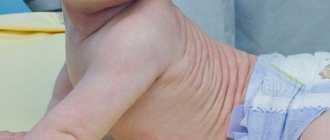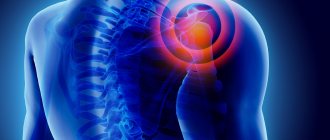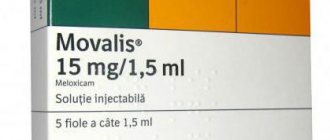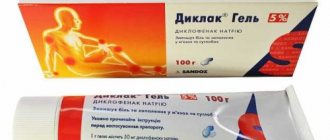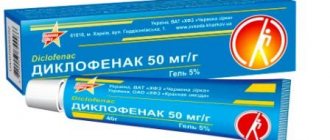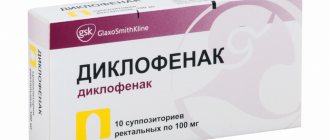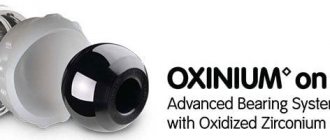Updated: 04/23/2021 15:12:56
Expert: Abramova Tsilya
Painkiller gels Dolobene and Diclofenac are very popular, but it’s not so easy to immediately say which is better. We analyzed their advantages and disadvantages in order to understand under what conditions it is better to choose one or another remedy.
| A drug | Advantages | Flaws |
| Dolobene | Used in gel and ointment form Includes 3 components that provide analgesic, anti-inflammatory, decongestant effects Has a large number of indications When applied locally, it is absorbed in small quantities, so overdose and severe systemic reactions are unlikely. | Does not apply up to 5 years Contraindicated for pregnant women |
| Diclofenac | Has a pronounced analgesic effect Reduces pain intensity within an hour after first use Water-alcohol base provides a cooling effect Well tolerated when applied topically | Not possible if you are intolerant to NSAIDs Contraindicated in the 3rd trimester of pregnancy and during breastfeeding It is not recommended to use for more than two weeks without visiting a doctor Appointed only from 14 years of age |
pharmachologic effect
Manufacturer: Ratiopharm (Germany)
Release form: gel for external use
Active ingredient: dexpanthenol, dimethyl sulfoxide, sodium heparin
Analogs: Nise gel, Indovazin, Heparidex
The mechanism of action of Dolobene is due to its active components included in the drug. The medication has an analgesic, anti-inflammatory effect, and also prevents the formation of blood clots and removes excess fluid from damaged tissues.
Indications for use of Dolobene
The drug is used externally for the following diseases:
- soft tissue injury, accompanied by hematoma, swelling and severe pain;
- injuries to joints, tendons and ligaments;
- inflammatory processes of the muscular-articular system (bursitis, epicondylitis, periarthritis).
The drug is well tolerated by patients. In rare cases, itching, hyperemia or burning may occur in the area where the gel is applied. These phenomena quickly stop with further use of the medicine.
Analogues of Doloben gel
The pharmaceutical market is represented by a number of Dolobene substitutes, which are produced by domestic and foreign companies. In the pharmacy chain, analogues of Dolobene gel are sold in the form of:
- synonyms;
- combination drugs;
- generics.
A variety of substitutes helps the doctor not only select the appropriate analogue, but also combine drugs, taking into account the degree of injury or inflammatory process.
Table of analogues of Dolobene with price and country of origin
| Analogue | Price | Manufacturer country |
| Ketoprofen | 115-150 | Russia |
| Traumeel | 550-600 | Germany |
| Bystrumgel | 230-250 | Russia |
| Ketonal | 180-220 | Slovenia |
| Nise gel | 200-330 | India |
| Finalgon | 300-350 | Russia |
| Heparidex | 350-380 | Russia |
Imported and Russian analogues of Dolobene in various dosage forms make it possible to use them to relieve the symptoms of the disease. They can be prescribed by a doctor in the form of mono or combination therapy.
You can supplement the list of analogues of Dolobene gel with the following drugs:
- Deep Relief;
- Indovazin;
- Nimulid;
- Dimexide;
- Viprosal;
- Ibuprofen;
- Ortofen
Such a wide range of drugs makes it possible to choose domestic analogues of Dolobene that are cheaper, but equally effective.
Ketoprofen
Manufacturer: BIOKOM (Russia)
Release form: tablets, gel for topical use, solution for IM, IV infusion
Active ingredient: ketoprofen
Ketoprofen is a non-steroidal anti-inflammatory drug that provides analgesic, antipyretic and anti-inflammatory effects. The drug actively relieves inflammation of an acute or chronic nature, accompanied by pain of varying intensity.
The analogue is often prescribed for joint diseases caused by various reasons. And also as a pain reliever for soft tissue injuries, ruptures and sprains. The dosage of the drug and its dosage form for use is determined depending on the clinical picture of the disease and the severity of the pain syndrome.
Traumeel
Manufacturer: HEEL (Germany)
Release form: homeopathic ointment for external use, lozenges
Active ingredient: components of plant origin
The active components that make up Traumeel have anti-inflammatory and analgesic effects. The analogue is used as part of complex therapy for the following pathologies:
- diseases of the musculoskeletal system (tenosynovitis, bursitis, periarthritis, arthrosis);
- after injuries or surgical interventions accompanied by soft tissue swelling.
The drug is prescribed to adults and children over 3 years old by applying the ointment to the skin in the projection of the affected area in the form of light rubbing up to 4 times a day. The duration of the course of treatment is determined by the doctor.
Bystrumgel
Manufacturer: AKRIKHIN (Russia)
Release form: gel for external use
Active ingredient: ketoprofen
The activity of Bystrumgel is due to the active substance, which relieves pain, tissue swelling, and inflammation.
This analogue of Dolobene has a therapeutic effect for various joint pathologies, but does not have a negative effect on articular cartilage.
The effect of using the product by rubbing into the painful area is observed after 20–30 minutes.
Ketonal
Manufacturer: LEK (Slovenia)
Release form: gel for external use, tablets
Active ingredient: ketoprofen
Ketonal is used as symptomatic therapy for pathological processes of the musculoskeletal system of various origins. Dolobene's analogue actively relieves dental pain, headaches, and postoperative pain. For external use, the medication is rubbed lightly into the affected area 1-2 times a day.
Oral intake is 1-2 tablets 2-3 times a day. Combined external and internal use of the Dolobene analogue is possible.
Nise gel
Manufacturer: Dr.
Reddy`s (India) Release form: gel for external use
Active ingredient: nimesulide
Nise gel is used as a local anesthetic and anti-inflammatory agent. Dolobene's analogue actively relieves pain during inflammation of the joints, accompanied by degenerative processes in cartilage and bone tissue.
The drug is applied to the damaged area in a thin layer until it is completely absorbed 3-4 times a day.
Finalgon
Manufacturer: SANOFI (Russia)
Release form: ointment for external use
Active ingredient: nicoboxil, nonivamide
Finalgon has a pronounced analgesic effect due to the combined action of active substances, which leads to a reduction or disappearance of pain within 30 minutes.
An analogue of Dolobene ointment is used for pain of various types associated with diseases of the joints, spine, and traumatic damage to the musculoskeletal system. The ointment is applied to the painful area in a small amount, evenly distributed over its entire area. The warming effect is pronounced and appears after a quarter of an hour.
Heparidex
Manufacturer: TATHIMPHARMPREPARATIONS (Russia)
Release form: gel for external use
Active ingredient: dexpanthenol, dimethyl sulfoxide, sodium heparin
Heparidex is an analogue of Dolobene in terms of the composition of active ingredients. The combined drug effectively relieves tissue swelling, pain and inflammation. These pathological symptoms are observed in injuries, joint diseases, bruises, accompanied by the development of hematomas.
The drug is applied to the damaged area 3-4 times a day until the symptoms of the disease disappear.
Dolobene Gel is a complex action drug
To start selecting analogues of medical drugs, you need to understand what the original is intended for. Gel Dolobene at one time made a real splash in the market of pharmacological products.
A combined drug characterized by anti-inflammatory, analgesic and antithrombotic effects is used to combat various types of pain and is primarily used to combat:
- hematomas;
- inflammation of joints and soft tissues;
- swelling;
- bruises;
- neuralgia, etc.
The effect of the drug is ensured by its main components:
- heparin;
- dexpanthenol;
- dimethyl sulfoxide, which complement each other, provide a quick and lasting effect and a wide range of applications.
Like any drug, Dolobene has contraindications, side effects and disadvantages, one of which is the high price and difficulty in purchasing. This becomes the main reason why it is worth looking for analogues.
Dolobene or Voltaren - which is better?
Manufacturer: NOVARTIS PHARMA AG (Switzerland)
Release form: tablets, solution for intramuscular administration, rectal suppositories
Active ingredient: diclofenac
What can replace Dolobene gel for pain, and will it be better for arthrosis or arthritis? Pain due to joint disease is better relieved by its analogue, since Voltaren gel has a more pronounced analgesic and anti-inflammatory effect.
If the symptoms of the disease are caused by external factors (soft tissue injury, bruise, sprain), and not by an inflammatory process, Dolobene will be the best. Due to the active substances included in its composition, tissue swelling subsides faster and hematomas are resolved.
Description of Dolobene
Dolobene is a local analgesic drug, produced in the form of a gel and ointment. It is an anti-inflammatory, anticoagulant, analgesic and decongestant. The composition contains heparin, DMSO and dexpanthenol. Manufactured by Merckle in Germany.
Dimethyl sulfoxide (DMSO) has an analgesic, decongestant effect, and helps reduce the severity of inflammation. The substance inactivates radicals that are actively produced during the inflammatory process.
DMSO has a local analgesic effect. The decongestant effect of Dolobene is due to the improvement of subcutaneous reactions. DMSO penetrates the skin, helping to better absorb other drugs.
Heparin exhibits an antithrombic effect and helps tissue restoration by inhibiting a component such as hyaluronidase.
Dexpanthenol, when used topically, is converted to pantothenic acid when used topically. The effectiveness of this substance is comparable to the effectiveness of vitamin B. The acid is involved in various catabolic processes due to epithelization of damaged skin and stimulation of granulation.
Research and effectiveness
Dolobene has a combined beneficial effect:
- analgesic, decongestant;
- regenerating;
- antithrombic.
Dolobene can be recommended in the complex treatment of arthritis, neuralgia, thrombophlebitis, soft tissue compression and other injuries.
The main advantage of the gel is its rapid combined effect. It differs from Diclofenac in that, in addition to pain relief, it is used to prevent blood clots.
Unlike many other local NSAIDs, Dolobene can be used from the age of 5, which expands the scope of its application.
The drug has a quick and pronounced effect due to its impact on different parts of the pathological process - inflammation, pain, swelling. The DMSO in the composition serves as a kind of conductor that accelerates the flow of medicinal substances to the source.
Source:
Dolobene gel: complex therapy of pain syndrome in diseases of the musculoskeletal system. Suprun E.V. Man and medicine. 2021.
Contraindications
The product for local use Dolobene is not used in the following conditions:
- intolerance to components;
- asthma;
- severe cardiovascular diseases;
- severe renal and liver dysfunction;
- pregnancy, lactation, up to 5 years;
- open wounds.
There is no data on use during pregnancy. Therefore it is contraindicated. DMO passes into mother's milk, so it is also not used during lactation.
Side symptoms
When using Dolobene, there is a risk of local reactions in the form of itching, burning, and redness. They usually go away on their own and do not require discontinuation of the drug.
DMSO may cause allergies. During the use of Dolobene, there may be a garlic odor from the mouth, which is caused by a product of DMSO metabolism - dimethyl sulfide. Taste sensations may also change.
In very rare cases, angioedema and urticaria appear. When applying the product to a large area of the body, systemic reactions may occur - nausea, chills, shortness of breath, headache.
Dosage
Dolobene is used only topically. The gel is applied 2-4 times/day. When using a bandage, wait a few minutes before applying it. The duration of therapy differs depending on the severity of the disease.
There is no data on an overdose of Dolobene.
Who is it suitable for?
Dolobene is good to use for:
- bruises;
- tendon inflammation;
- swelling;
- injuries with tendon sprains;
- closed bruises;
- epicondylitis;
- periarthritis;
- neuralgia.
Dolobene or Fastum gel - which is better?
Manufacturer: MENARINI INDUSTRIE FARMACEUTICHE RIUNITE (Italy)
Release form: gel for external use
Active ingredient: ketoprofen
Both drugs have equivalent indications for use. Due to the active substance included in the analogue, pain and inflammation are relieved. For diseases of the joints or spine, accompanied by degenerative processes, Fastum gel is the best treatment.
Dolobene is used more for bruises, sprains, and hematomas. Under its action, subcutaneous hemorrhages resolve faster, excess fluid is removed from cellular structures and damaged tissues are regenerated. To relieve traumatic injuries, it is better to use Dolobene.
Description of Diclofenac
Diclofenac is available in different dosage forms - tablets, solution, gel, ointment, suppositories. Contains the active ingredient of the same name – diclofenac sodium. 1 g of gel contains 50 mg. The drug is produced in Russia, Serbia, Ukraine, Romania, Belarus, and India.
Diclofenac gel is a topical NSAID used for muscle and joint pain. The drug has a pronounced analgesic, antipyretic, antirheumatic, anti-inflammatory effect.
Research and effectiveness
Osteoarthritis is a common pathology, occurring in 10% of the total population. The pathological process is based on damage to all components of the joint. A common complaint with this condition is pain. Diclofenac is considered as a drug for the relief of pain in osteoarthritis.
Diclofenac, in comparison with placebo, shows the greatest effectiveness after a 2-3-week course of use. The use of a topical drug with a higher safety profile is considered as an alternative to systemic NSAIDs.
When comparing the effectiveness of Diclofenac gel with Ibuprofen in tablet form, the response rate was 40% and 34%, respectively.
Diclofenac can be recommended in the complex treatment of joint pathology. It will also be a good measure for preventing pain in rheumatic diseases.
Source:
The effectiveness of local forms of Diclofenac in relieving pain in osteoarthritis. Ukrainian Rheumatological Journal. Lukyanchuk E. 2015.
Contraindications
Diclofenac in gel form should not be used in case of hypersensitivity to the composition and intolerance to NSAIDs. It is contraindicated when there is a history of attacks of bronchial asthma, acute rhinitis, urticaria, which are caused by taking ASA.
The third trimester of pregnancy is a strict contraindication; it can be used in the 1st and 2nd trimesters when there are compelling reasons and the benefit outweighs the risk.
Diclofenac in the form of a gel, unlike tablets and solution, is safer, so there are much fewer restrictions on its use.
Side symptoms
Diclofenac is well tolerated when used topically. Rarely, temporary skin reactions may occur due to allergies. Other uncommon side effects are angioedema, asthma, rash, contact dermatitis, erythema, photosensitivity.
Dosage
Diclofenac gel can be used from 14 years of age. Apply 3-4 times/day with massage movements. The duration of use depends on the disease. Diclofenac should not be used for more than two weeks. When long-term therapy is needed, you should consult your doctor.
Diclofenac in the form of a gel has low adsorption, so overdose is almost completely excluded. If the product is swallowed, systemic reactions may already occur. Then you urgently need to rinse your stomach and take enterosorbent.
Who is it suitable for?
Indications for the use of Diclofenac are pain and inflammation of muscles, joints, and tendons. Can be used for rheumatic diseases. Relieves pain and inflammation after injuries.
Diclofenac is good to use for muscle tension and soreness after physical training, to relieve pain during exacerbation of radiculitis. It also serves as a good prevention of muscle pain in rheumatic diseases.
The gel can be used for a short course during exacerbation of diseases of the spine and joints, when the pain is short-term. It can be used to prevent muscle pain immediately after high physical activity.
Dolobene or Dolgit
Manufacturer: DOLORGIET (Germany)
Release form: gel for external use
Active ingredient: ibuprofen
Analogue Dolobene Dolgit refers to non-steroidal anti-inflammatory drugs that actively relieve pathological symptoms of degenerative processes in the joints and spine.
Dolobene will have the best effect for hematomas, inflammation of soft tissues, muscles and tendons, accompanied by swelling.
Dolobene or Heparin ointment
Manufacturer: ALTAIVITAMINS (Russia)
Release form: ointment for external use
Active ingredient: benzocaine, sodium heparin, benzyl nicotinate
Heparin ointment is a combined analogue of Dolobene with an analgesic effect that promotes the resorption of hematomas, blood clots and the prevention of their formation.
To relieve this pathology, which may occur as a result of soft tissue injury or sprained ligaments, Heparin ointment will be advantageous. The medication, due to the combined effect of the active substances, will be more effective than Dolobene for these symptoms.
Dolobene or Diclofenac - which is better?
Manufacturer: NOVOSIBKHIMPHARM (Russia)
Release form: solution for intramuscular administration, ointment for external use, tablets
Active ingredient: diclofenac
The use of Diclofenac is much more effective for diseases of the joints and spine of various etiologies. This effectiveness of the analogue is explained by the action of its active substance. Dolobene gel will be less effective for such pathology.
Diclofenac is part of a group of non-steroidal drugs that provide analgesic, antipyretic and anti-inflammatory effects.
Troxevasin or Dolobene - which is better?
Manufacturer: BALKANPHARMA-TROYAN (Bulgaria)
Release form: gel for external use
Active ingredient: troxerutin
Analogue Dolobene Troxevasin helps eliminate edema, reduce inflammation of the vascular wall, and increase capillary tone. This action of the drug will be effective for injuries accompanied by pain, swelling, bruises or hematomas (bruise, sprain).
If pain and swelling are manifested by inflammatory processes in the joints (periarthritis, epicondylitis), Dolobene will be the best to use.
Which drug is better
Dolobene is best used for injuries with the appearance of hematomas, varicose veins, sprains, and swelling. Diclofenac effectively copes with muscle pain after physical activity, as well as in rheumatic diseases.
Both products contain potent substances that can provide pain relief. When choosing a remedy, you need to look at the limitations and side symptoms. When both drugs meet all parameters, the price category becomes important. Diclofenac wins in this, its price is lower due to the domestic manufacturer.
Local remedies can be used without a doctor's permission, but not for long. When long-term use of the drug is necessary, you should consult. Self-medication can be dangerous.
Dolobene or Lioton - which is better?
Manufacturer: MENARINI INDUSTRIE FARMACEUTICHE RIUNITE (Italy)
Release form: gel for external use
Active ingredient: sodium heparin
Lyoton is an anticoagulant for external use that affects the blood coagulation system. The analogue prevents the formation of blood clots and improves capillary blood flow.
The drug stimulates local metabolism, which reduces the swelling of damaged tissues and resolves hematomas. Such properties of the Dolobene analogue make it a priority for injuries and bruises.
On the recommendation of a doctor, you can make a choice from the presented drugs and purchase cheaper analogues of Dolobene ointment, which are effective for injuries, bruises and inflammation of the joints.
Analogues of Dolobene gel on the Russian medical drugs market
Many will agree that a good analogue can be more effective than the original, but when choosing such products, one must take into account that they come in:
- with the same composition;
- similar in composition;
- having the same active ingredient;
- identical in purpose.
Don't want to overpay? The table below will help you understand the existing analogues of Russian and foreign production.
Diclofenac gel (Russia)
- The base is diclofenac, additional components are lavender oil, vitamins.
- Relieves pain from injuries and sprains, helps reduce inflammation and speed up regeneration.
Comfrey ointment (Russia)
- The base is larkspur (comfrey). Chondroitin, vitamins and essential oils complement its strength.
- Perfectly heals, relieves pain and inflammation, promotes restoration of cartilage and joints, improves metabolism.
